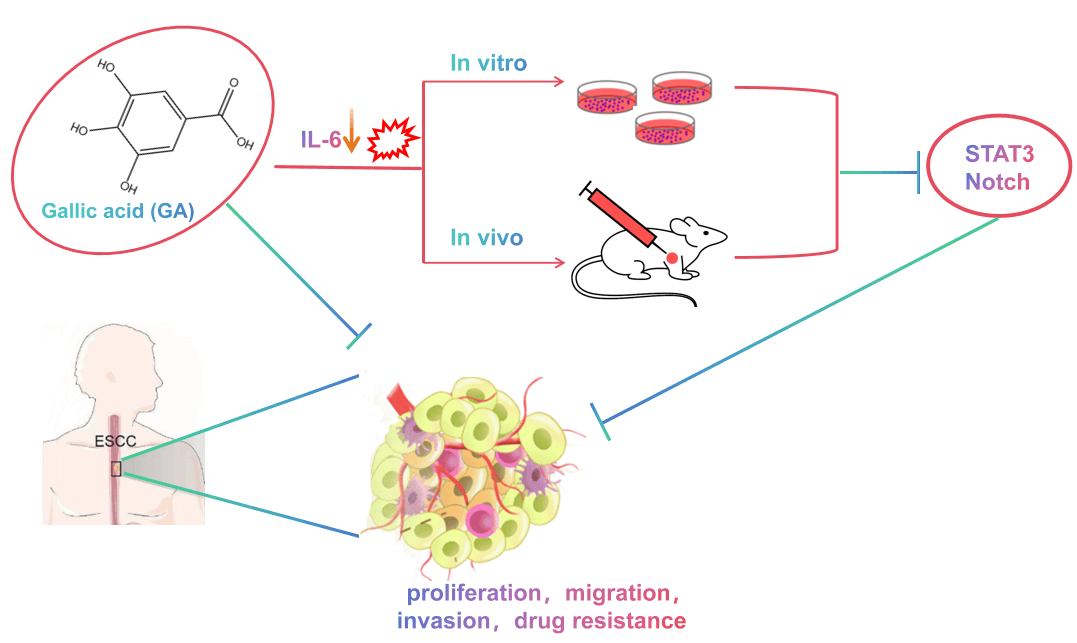Abstract
Background: Gallic acid (GA), a plant-derived polyphenol, possesses diverse biological functions such as reducing inflammation and against tumors. Currently, the influence of GA on the resistance of esophageal squamous cell carcinoma (ESCC) cells to cisplatin (DDP) is not well understood.
Methods: Cell counting kit-8 assay examined how GA affected KYSE30 and TE-1 cell viability. 5-Ethynyl-2′-deoxyuridine and TdT-mediated dUTP Nick-End labeling staining detected cell proliferation and apoptosis. Clone formation assay, flow cytometry, Carboxyfluorescein diacetate succinimidyl ester fluorescent probes, and Transwell assay determined cell biological properties, and 2′,7′-Dichlorofluorescin diacetate (DCFH-DA) fluorescent probes detected oxidative stress levels. Signal transducer and activator of transcription 3 (STAT3)/Notch pathway protein levels after GA and/or Interleukin-6 (IL-6) intervention were examined through Western blot. Furthermore, a model for subcutaneous graft tumors was established in nude mice.
Results: GA exerted suppressive effects on cell proliferation, and caused apoptosis of KYSE30 and TE-1 cells. IL-6 intervention activated the STAT3/Notch pathway and promoted the malignant biological properties of ESCC cells. In contrast, GA attenuated the effects of IL-6, while STAT3 or Notch inhibitor further enhanced the effects of GA, suggesting that GA inhibited the IL-6/STAT3/Notch pathway. Not only that, GA promoted oxidative stress and enhanced cell sensitivity to DDP both
in vitro and
in vivo.
Conclusion: GA suppresses the malignant progression of ESCC and enhances cell sensitivity to DDP by hindering the IL-6/STAT3/Notch pathway.
Graphical Abstract
Keywords
Gallic acid (GA); Cisplatin; Esophageal cancer; Interleukin-6 (IL-6); Chemotherapy sensitivity; Signal transducer and activator of transcription 3 (STAT3)/Notch pathway
 Open Access
Open Access